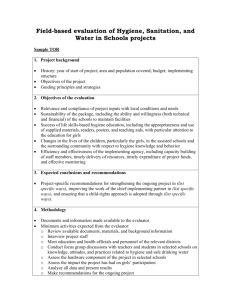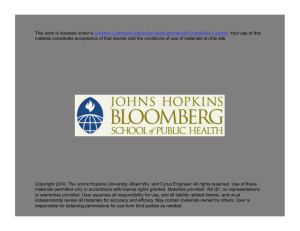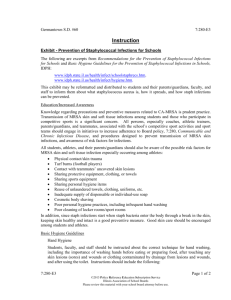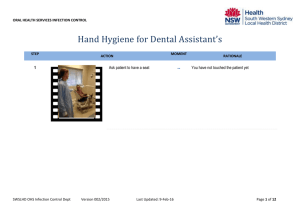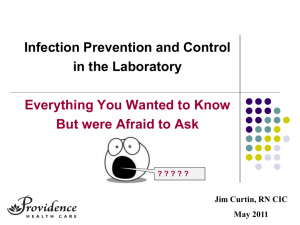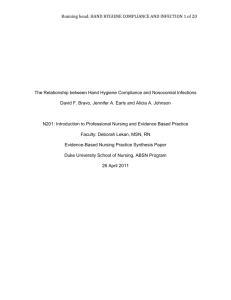Healthcare-associated infections
advertisement
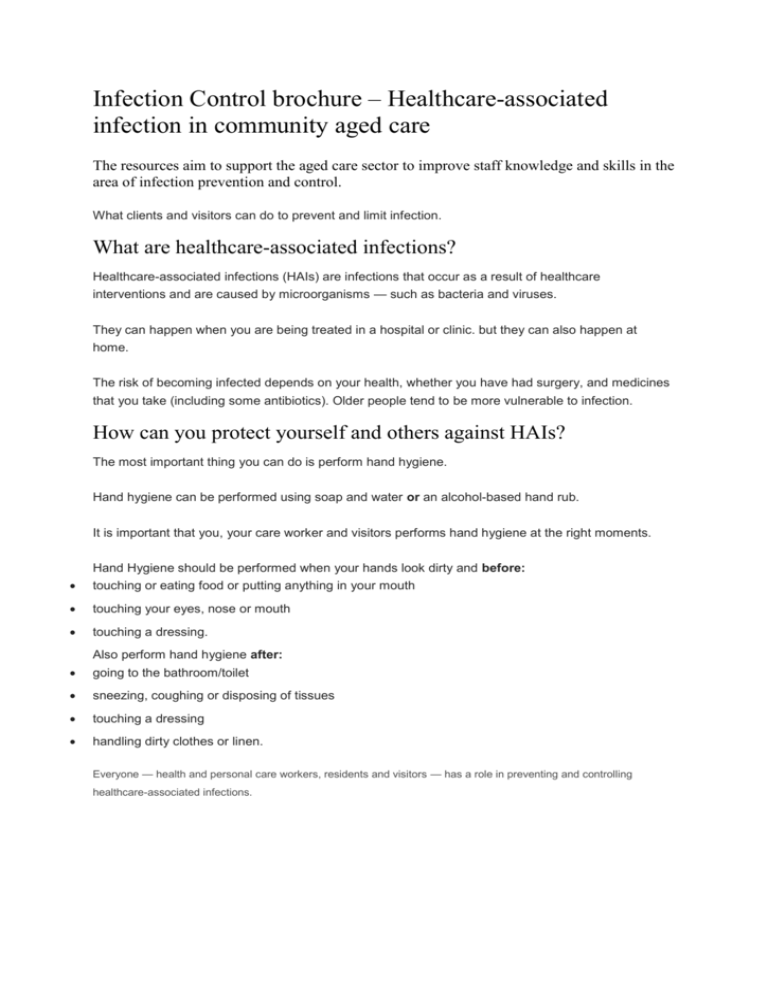
Infection Control brochure – Healthcare-associated infection in community aged care The resources aim to support the aged care sector to improve staff knowledge and skills in the area of infection prevention and control. What clients and visitors can do to prevent and limit infection. What are healthcare-associated infections? Healthcare-associated infections (HAIs) are infections that occur as a result of healthcare interventions and are caused by microorganisms — such as bacteria and viruses. They can happen when you are being treated in a hospital or clinic. but they can also happen at home. The risk of becoming infected depends on your health, whether you have had surgery, and medicines that you take (including some antibiotics). Older people tend to be more vulnerable to infection. How can you protect yourself and others against HAIs? The most important thing you can do is perform hand hygiene. Hand hygiene can be performed using soap and water or an alcohol-based hand rub. It is important that you, your care worker and visitors performs hand hygiene at the right moments. Hand Hygiene should be performed when your hands look dirty and before: touching or eating food or putting anything in your mouth touching your eyes, nose or mouth touching a dressing. Also perform hand hygiene after: going to the bathroom/toilet sneezing, coughing or disposing of tissues touching a dressing handling dirty clothes or linen. Everyone — health and personal care workers, residents and visitors — has a role in preventing and controlling healthcare-associated infections. Prevent the spread of disease by performing hand hygiene How to perform hand hygiene What can you do? There are a number of things you can do to lessen the risk of infection at home: perform hand hygiene carefully with soap and water or an alcohol-based hand rub don’t be afraid to ask care workers if they have performed hand hygiene cover your mouth and nose with a tissue when you cough or sneeze, and then perform hand hygiene try not to have too much clutter in your house make sure pets are not in the room during care activities tell your care worker straight away if you feel unwell tell your care worker if the area around the insertion site where drips, lines, tubes or drains become red, swollen or painful if you have a wound, keep the skin around the dressing clean and dry. Tell your care worker promptly if the dressing becomes loose or wet follow instructions on looking after medical devices you have. If you are not sure of what to do, ask maintain a clean environment correct handling of linen, food and waste. More information Don’t hesitate to ask your doctor or care worker for more information. Consumer guides are also available on specific healthcare associated infections such as MRSA, VRE and C. difficile at: nhmrc.gov.au References NHMRC (2010) Australian Guidelines for the Prevention and Control of Infection in Healthcare at: nhmrc.gov.au/guidelines/publications/cd33 Hand Hygiene Australia (2008) Health Care Associated Infections at: hha.org.au/ForConsumers/FactSheets.aspx#HCAI All information in this publication is correct as at April 2013





